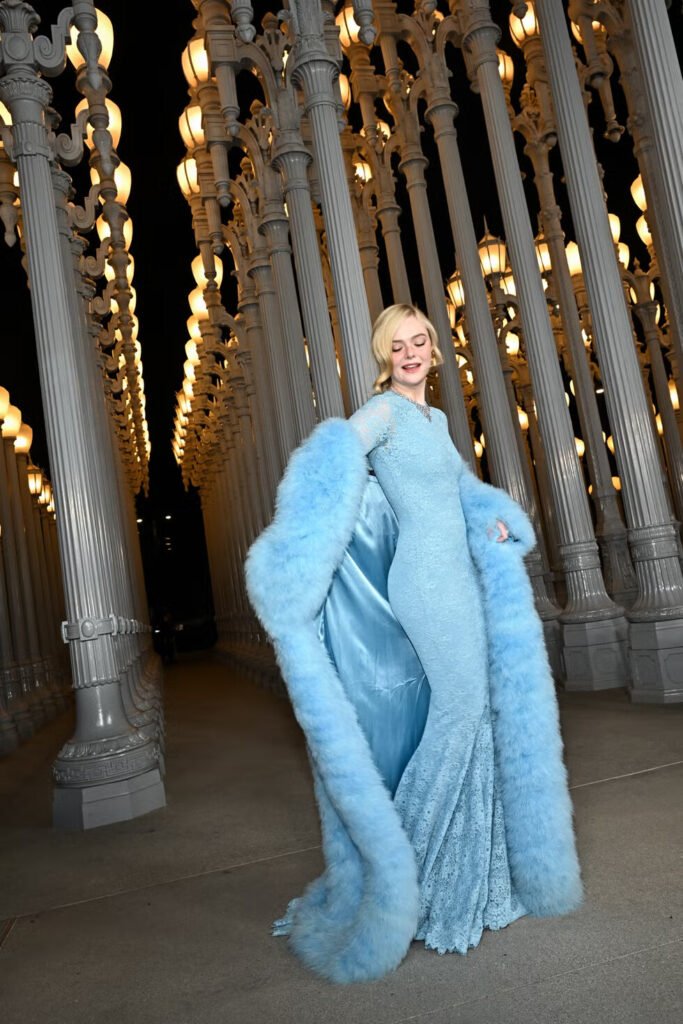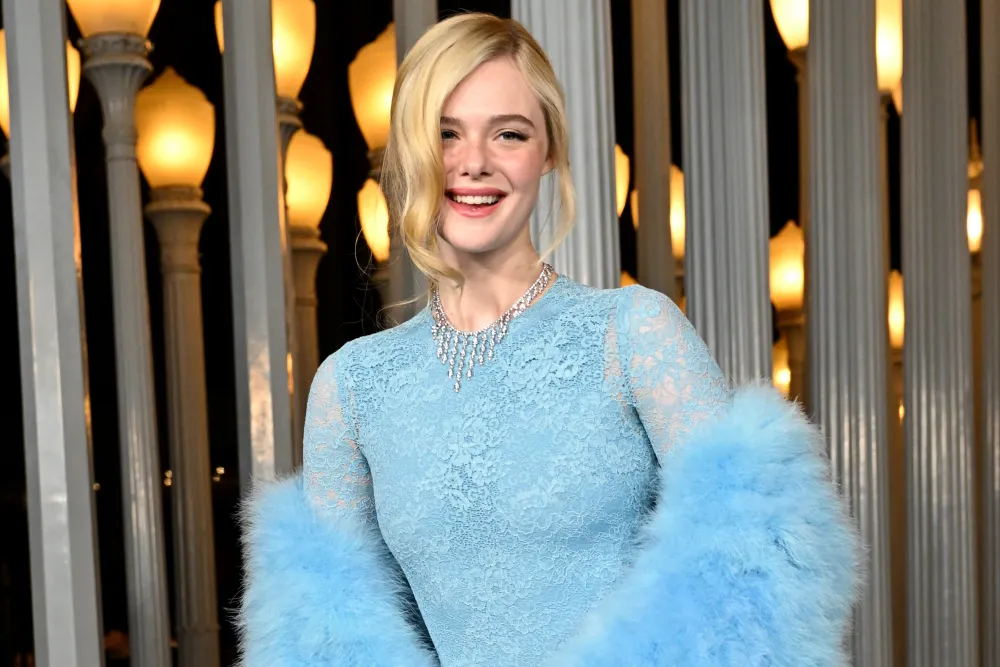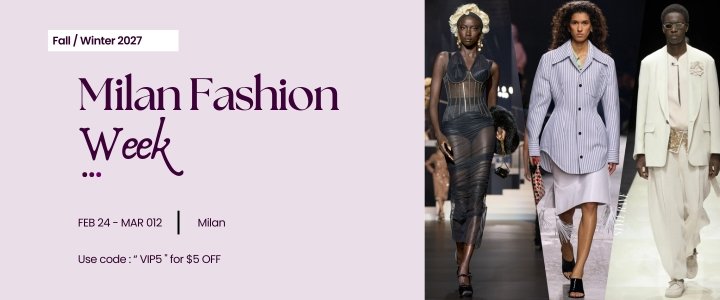When Gucci wrote the check to sponsor the 2025 LACMA Art+Film Gala, they weren’t just buying a logo placement—they were purchasing something far more valuable: cultural legitimacy draped in sheer lace and baby blue tulle. As Elle Fanning twirled through the Urban Light installation in her Cinderella-inspired gown, every photograph captured wasn’t merely documenting a red carpet moment but encoding a sophisticated transaction between luxury fashion and cultural institutions. The equation is elegant: Gucci supplies the glamour, LACMA provides the gravitas, and both emerge elevated. But this symbiotic relationship represents more than a single evening’s sparkle. It signals a seismic shift in how luxury brands are rebuilding their authority in a fractured media landscape where traditional fashion weeks hemorrhage relevance and celebrity endorsements feel increasingly transactional. Museum partnerships have become fashion’s new premium real estate—and the stakes have never been higher.
The November 1, 2025 gala, co-hosted by Leonardo DiCaprio and LACMA trustee Eva Chow, honored visual artist Mary Corse and filmmaker Ryan Coogler—a deliberate pairing that underscores the institution’s commitment to elevating both visual and cinematic arts. Yet beneath the celebration of these honorees lies a more calculated dynamic: luxury fashion houses are systematically repositioning themselves not as mere sponsors but as cultural patrons, co-authors of the very narrative that defines artistic legitimacy in contemporary America.
This strategic pivot reflects a profound crisis within traditional luxury marketing infrastructure. Fashion weeks, once the undisputed epicenter of brand storytelling, have seen their cultural monopoly erode as digital saturation transforms exclusive runway moments into commodified content within minutes. The shows continue, but their ability to generate sustained cultural conversation has diminished precipitously. Celebrity endorsements, meanwhile, suffer from their own credibility deficit—audiences have become sophisticated enough to recognize paid partnerships for what they are, stripping away the aspirational magic that once made a star’s product choice feel like a personal recommendation rather than a business transaction.

Museum galas offer something fundamentally different: implied endorsement without the taint of obvious commercialism. When Gucci dresses Elle Fanning for a LACMA event, the brand isn’t simply clothing a celebrity—it’s aligning itself with the museum’s century-long reputation for curatorial excellence, with the honorees’ artistic achievements, and with the cultural elite who comprise the guest list. The transaction feels less like advertising and more like patronage, less like product placement and more like cultural stewardship. This distinction matters enormously in an era when luxury consumers, particularly younger demographics, demand that brands demonstrate values beyond profit maximization.
The financial calculus supports this strategic reallocation. While exact sponsorship figures remain confidential, industry analysts estimate that major museum gala partnerships command seven-figure investments—substantial, but modest compared to the costs of mounting comprehensive fashion week presentations or sustaining long-term celebrity ambassador contracts. More importantly, the return on investment operates on multiple registers simultaneously. The gala generates immediate media coverage across fashion, entertainment, and art publications. It produces social media content that feels organic rather than promotional. It creates networking opportunities with cultural influencers, collectors, and institutional decision-makers. And it establishes the brand within a narrative of cultural contribution that extends far beyond any single product cycle.
This move signals a broader transformation in how luxury brands conceive of their relationship to culture itself. Historically, fashion houses positioned themselves as culture creators—the shows were the culture, the designs were the art, the brands were the institutions. But as cultural authority has become increasingly distributed and contested, luxury brands have adopted a more collaborative posture. By supporting established cultural institutions, they gain access to reservoirs of credibility that no amount of advertising expenditure could manufacture independently.

The LACMA Art+Film Gala, now in its fourteenth year, has become particularly adept at facilitating these arrangements. Since its founding in 2011, the event has supported LACMA’s film programming while creating a template for how cultural institutions can leverage luxury brand partnerships without compromising curatorial independence. The gala’s success has inspired similar initiatives at other major museums, creating what amounts to a competitive marketplace for luxury brand cultural patronage. Gucci’s sponsorship of the 2025 event positions the brand within this elite network of institutions and reinforces its identity as a house with serious cultural commitments rather than merely commercial ambitions.
The implications extend beyond individual brand strategy to reshape the broader cultural economy. As luxury houses pour resources into museum partnerships, these institutions gain financial stability that allows them to take curatorial risks and sustain programming that might otherwise prove commercially unviable. The danger, of course, lies in potential influence—whether explicit or implicit—that corporate sponsors might exert over institutional priorities. Yet the evidence thus far suggests that major museums have successfully maintained programming integrity while benefiting from luxury brand support. The 2025 honorees—Corse and Coogler—represent selections based on artistic merit rather than commercial calculation, suggesting that LACMA has managed to secure financial resources without surrendering curatorial authority.
For luxury brands, the strategic architecture of museum partnerships offers something increasingly rare in contemporary marketing: patience. Unlike digital campaigns that demand immediate metrics and measurable conversion rates, museum relationships build brand equity gradually, through sustained association and repeated exposure. Gucci’s presence at the LACMA gala contributes to a long-term narrative about the brand’s cultural values, a story that accumulates credibility through consistency rather than spectacular one-off gestures. This approach aligns with luxury’s fundamental value proposition—that quality and significance reveal themselves over time rather than through instant gratification.

The red carpet moment featuring Elle Fanning in her baby blue Gucci gown, photographed against the iconic Urban Light installation alongside celebrity attendees including Emma Roberts, Cindy Crawford, Kaia Gerber, Lorde, and Cynthia Erivo, encapsulates the multilayered return on this investment. The images circulate across media platforms, each appearance reinforcing Gucci’s association with artistic sophistication and cultural prestige. But more significantly, they document a new paradigm in luxury brand building—one where the most valuable real estate isn’t measured in column inches or screen time but in proximity to institutions that confer lasting cultural legitimacy.
As traditional marketing channels continue fragmenting and audiences grow increasingly skeptical of conventional advertising, luxury brands face a fundamental choice: adapt or atrophy. Museum partnerships represent more than a tactical pivot—they signal a philosophical realignment, an acknowledgment that in contemporary culture, brands can no longer simply assert their prestige through declaration. They must earn it through association, demonstrate it through action, and sustain it through genuine cultural contribution. The 2025 LACMA Art+Film Gala, with its elegant fusion of fashion, film, and fine art, offers a blueprint for this new reality. The question isn’t whether other luxury houses will follow Gucci’s lead—it’s how quickly they’ll recognize that the future of luxury marketing doesn’t happen on runways or in advertisements, but in the museums where culture itself gets defined.



